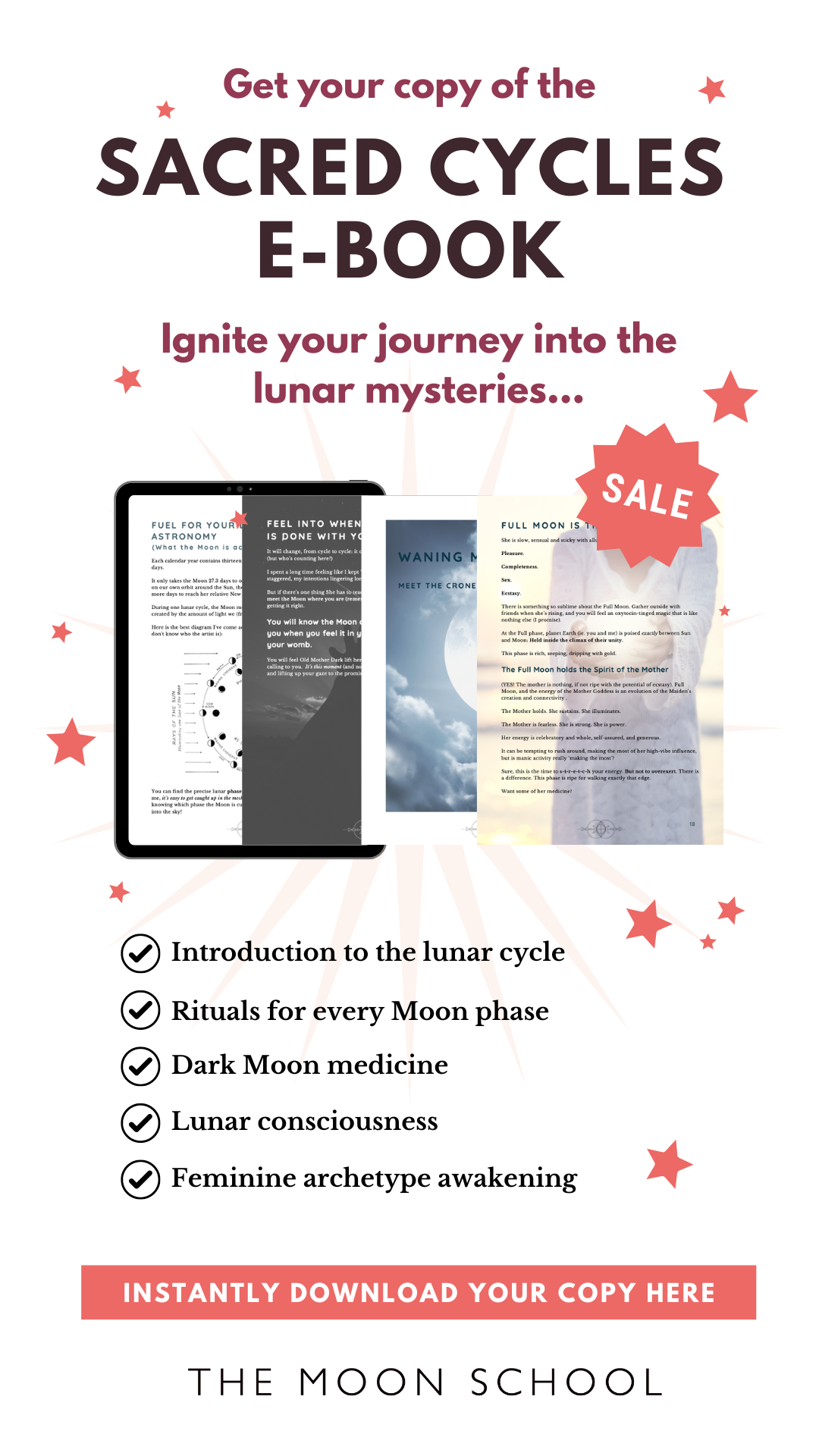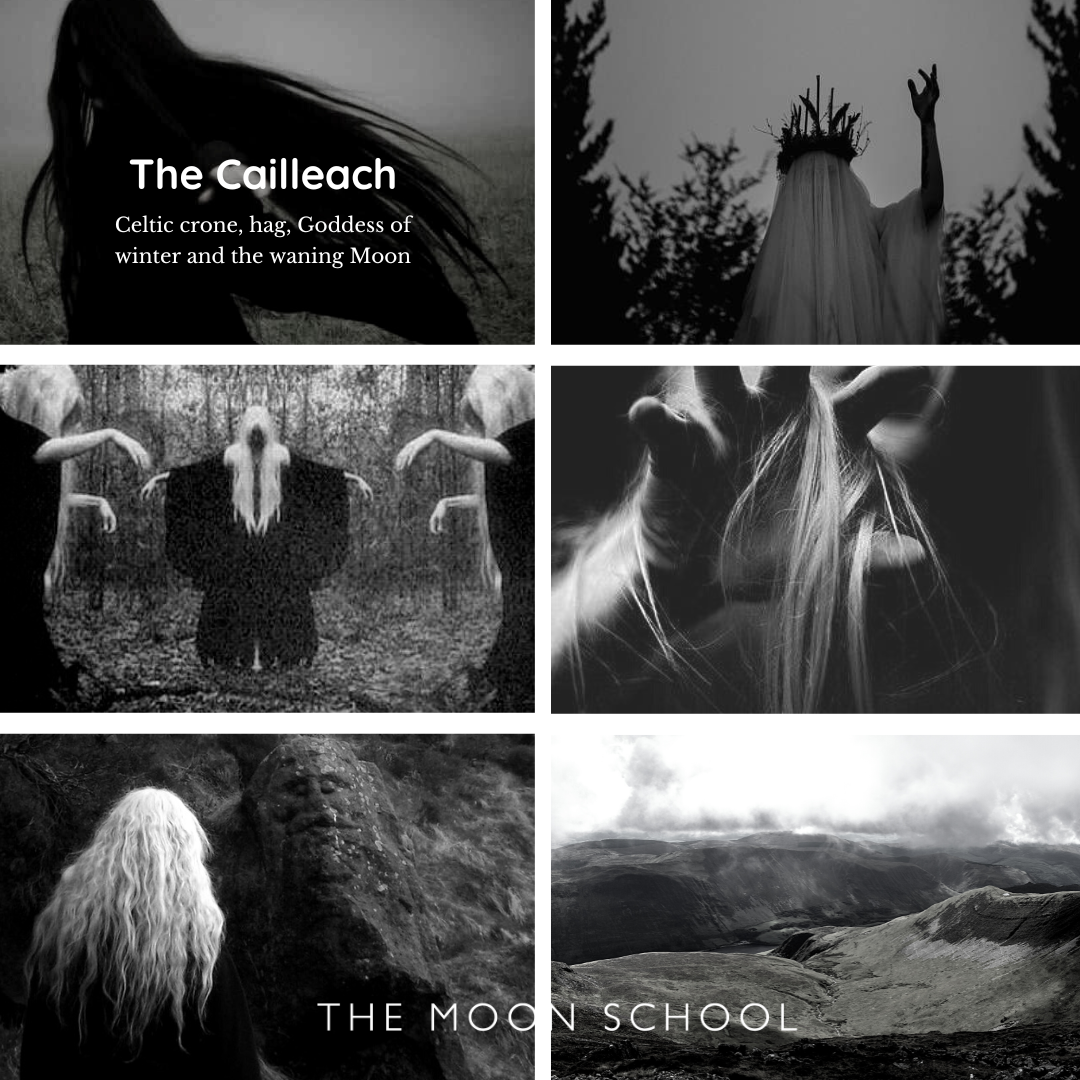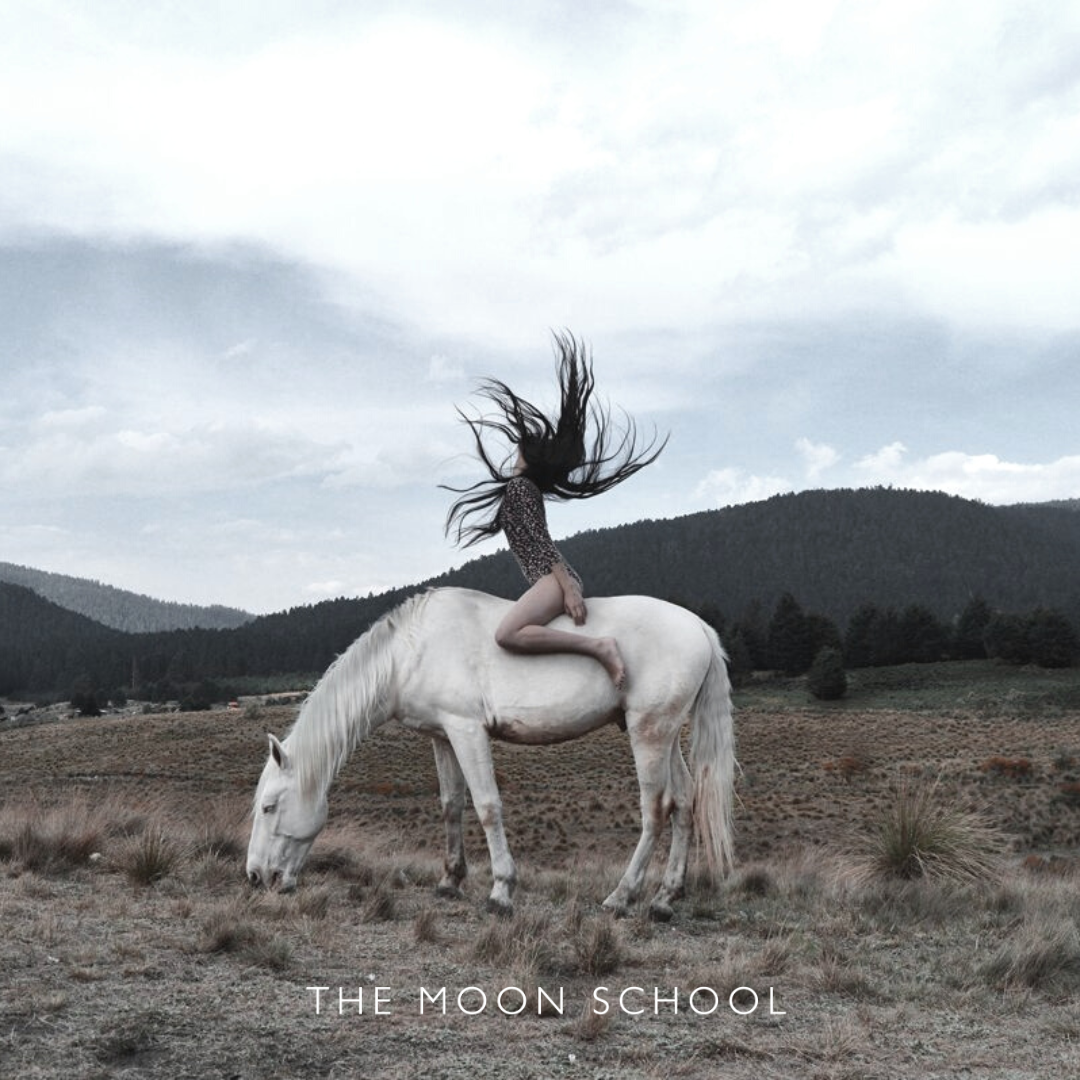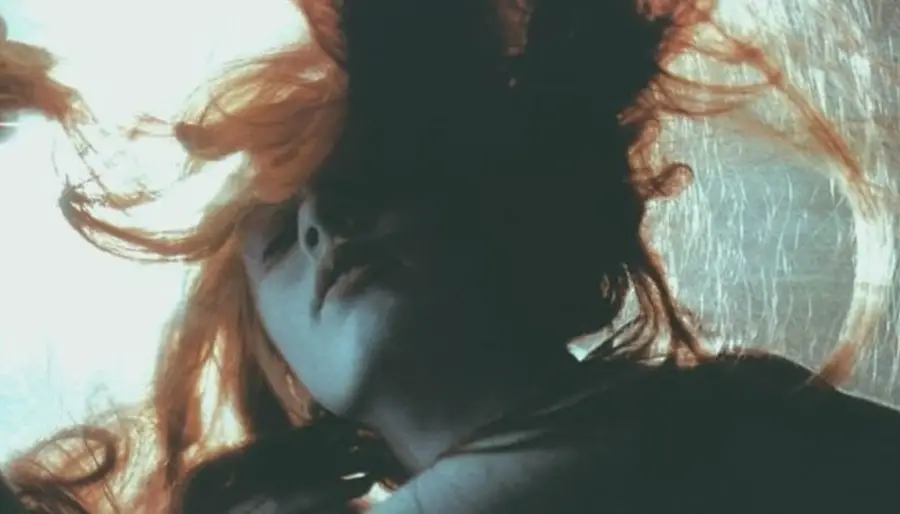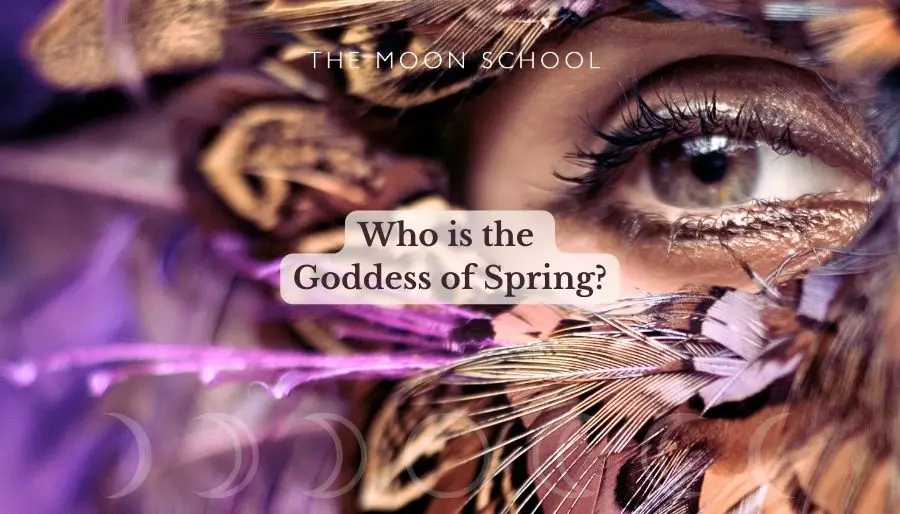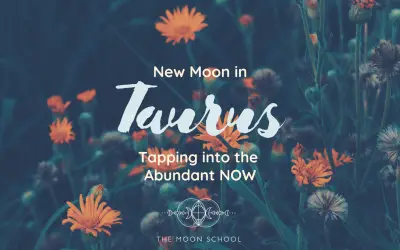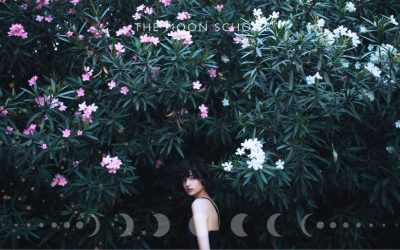Virtually every culture around the world has deities connected to the Moon
Do a little research and you’ll find Moon goddesses and gods are prevalent in myths and stories, art and music, ritual, and in the everyday.
The fact is – humans have always been enamored by the fascinating and ever-present lunar disk – that lone and glowing satellite, spinning eternally around our planet. She (or he to some) moves through phases every lunar month, without fail.
And each Moon phase seems to carry its own magic. From the dark beginnings of the New Moon, to the emerging crescent Moon, to the half Moon (known as the first quarter) and beyond… All the way to her glorious Full Moon phase. And then back to New Moon, in only 28 days.
She is an ever-present visual reminder of the cyclic nature of life, and the mystery and magic of rebirth.
Personifying our Moon, and imbuing this mysterious orbiting piece of rock with spiritual power, has made sense for most of our human journey. For our ancestors around the globe, the physical, spiritual, emotional, mental, and creative realms weren’t as separate as we like to make them.
Having a Moon Goddess (or God) has always been a vital part of our spirituality
And it’s clear why –
👉🏼 The cycle of our Moon is instrumental in the seasonal change on Earth.
👉🏼 The Moon is a natural timekeeper. Before the gregorian calendar, humans tracked the passing of time through lunar months.
👉🏼 We know our Moon heavily influences the tides, particularly during eclipses. And we, too are mostly comprised of the element of water.
👉🏼 And of course, her cyclical rhythm correlates with the menstrual cycle of women** and therefore the procreation of the human race!
**This correlation is less evident now, with so many influences over the female body, from artificial light to medications and the pill. Yet to our ancestors, female fertility would have been intrinsically connected to the lunar rhythm.
Find out about the Moon / Menstrual cycle connection HERE
Grandmother Moon – who in western astrology rules over the unconscious, intuition, emotion, mothering, daily rhythm, and the home – is not personified as female in all cultures.
Moon Goddess… or God?
Many of the older, primitive hunting cultures had male Moon Gods.
From the Sumerian Moon God Sīn or Suen, to the Egyptian male deity Khonsu, some (male) Gods of the Moon were even considered dangerous to women!
Maybe you can begin to imagine the varied and intricate mythologies scattered throughout the world? As each of our unique and many-layered cultures wove tales of its own Moon deity, and this deity’s dance across the skies, with an equally important sun god.
Moon Goddess Guide (Indexed A – Z)
Here, we’ll look at Goddesses of the Moon.
What follows is an index (in alphabetical order) of many (though not all!) lunar deities from around the world, and some of their most interesting stories…
Arianrhod
Arianrhod was a Celtic Goddess of fertility, rebirth, and time, also sometimes associated with the Moon. Her name means “Silver wheel”. Personifying the mother archetype, she’s usually connected to the Full Moon phase.
Artemis
Classical greek goddess of the Moon, Artemis also ruled over the hunt, forests, wilderness, and wild animals.
In Greek mythology, Artemis was the daughter of the sky god Zeus, and the goddess Leto. She was the twin sister of the sun god Apollo, whom she helped midwife into the world moments after she, herself was born.
As a maiden goddess, Artemis is associated with the crescent Moon. She’s also heavily identified with the goddess Selene, as well as Hecate. Together, these three Moon goddesses made up the Moon’s triple aspect.
Curious to learn more about Artemis?
Read this post next: Who is the Goddess Artemis, and how to Invoke Her
Artume
Etruscan Moon goddess, also ruler of nature, forests, fertility, the night, and death. Likely an adaptation of Artemis.
Auchimalgen
A prominent Moon goddess sacred to the Araucanian Mapuch people, of south-central Chile. Auchimalgen’s husband was the sun, and she was also a seer and prophetess, and the only benevolent deity in the region.
Bendis
This little-known Thracian deity was mainly worshipped in Athens, ancient Greece. Closely associated with Artemis, she was also a goddess of the hunt (the Thracians were a warrior people) and was usually depicted holding two spears.
The Cailleach
Not often described as a lunar deity, the Cailleach is one of the great Celtic ancestors. Yet as a hag, or crone Goddess, she shares the disseminating, destructive power of the waning Moon.
Cerridwen
A powerful Welsh Goddess and enchantress, Cerridwen possessed the gifts of Awen – inspiration and prophesy.
A white witch, she held incredible magical skills, including the ability to shapeshift.
She was also the keeper of the underworld, a place of transformation and rebirth. For this reason, the lunar goddess Cerridwen is usually associated with the dark Moon.
Chang’e
Originally known as Heng’e, Chang’e is the Chinese goddess of the Moon, and immortal inhabitant of our lunar satellite.
Her legend features in one of China’s most important festivals – the Mid-Autumn festival – which is held on the Full Moon of the 15th day of the 8th month of the Chinese calendar. Coinciding with September or October in the West, this Full Moon is considered to be the brightest in the whole year.
Ch’ang O
Another of the Chinese Moon goddesses, Ch’ang’O (also known as Heng-O) originally lived on Earth. Her husband Yi was such a skilled archer that the gods gave him an elixir of immortality. One day she drank it, and scared, she fled to the Moon for protection. The Moon hare breathed out a strong gust of wind, so that Yi was unable to reach his wife, and she remained on the Moon.
Coyolxauhqui
Coyolxauhqui (pronounced Koy-ol-shauw-kee) means “the one adorned with golden bells”, and she was the Aztec goddess of the Moon, and/or Milky Way.
Her legend tells that when she discovered her mother Coatlicue, “the one with the serpent skirt,” was pregnant, she plotted to kill her with the help of her 400 brothers. Yet at the moment of the attack, her mother’s son – who was the Sun – was born. Using a ray of light, he cut Coyolxauhqui into pieces and tossed her head up into the heavens, where it became the Moon.
Diana
Diana was the Roman goddess of the Moon, aligning closely with Artemis in Greek mythology. A beautiful woman, she was widely worshiped in ancient roman religion. Usually depicted with a bow and arrow – and like her greek counterpart – Diana was also associated with wilderness and the hunt.
Diana was considered an aspect of a triple goddess.
Commonly knowns as Diana triformis, she was connected closely with other Roman Goddesses Luna and Hecate, and together they comprised the tryptic of the waxing Moon (maiden), Full Moon (mother), and waning Moon (crone).
Though it may have been that all aspects were in fact recognized as Diana: She was huntress, Moon and Queen of the Underworld.
YOU MAY ALSO LIKE: 7 Divine Feminine Archetypes & How To Embody Their Power
Luna
Often connected to Diana in her triple form, Luna is the roman counterpart to the greek goddess Selene.
In roman art, Luna is depicted with a crescent moon and like the goddess Selene, she drives a two-yoke moon chariot across the night sky.
Hecate
Hecate is a powerful dark goddess of the Moon, and one of the most ancient from the greek pantheon. In fact, she likely precedes the Olympians, going as far back as the Cybele cults, into older, pre-historic times.
Hecate is an underworld goddess, also associated with thresholds, entrances, and crossing places. When at a crossroads, this fearsome Moon deity is sometimes depicted with three heads, alluding to her triple goddess status.
She’s often revered as the Goddess of death, necromancy, sorcery, magic, and witchcraft. Also of the night and the dark Moon.
You can read about the deeper meaning of the Dark Moon Phase HERE.
Together with Artemis, Hecate is often connected to the Moon goddess Selene, personifying the Moon’s triple form.
Is Hecate Calling?
Read this post next: Who is Hecate, Greek Goddess of Magic and Witchcraft?
Huitaca
Lunar goddess of the Muisca, located in modern-day Columbia. Huitaca was also the goddess of the arts, music, and dance, as well as sexuality, and witchcraft.
According to legend, Huitaca was a beautiful goddess who was also an owl, and she championed living a life full of joy and pleasure. This was against the wishes of her husband, who one day threw her into the sky where she became the Moon.
Ix Chel
Ix Chel means “Lady Rainbow” and/or “She of the pale face”, and is thought to be one of the Mayan moon goddesses, though sources aren’t definitive. Also presiding over medicine and midwifery, this deity was a powerful keeper of the dual feminine arts of birthing and healing.
Yet this possible Moon goddess had a destructive side – her headdress contains a serpent and her skirt is formed from bones – she was also associated with war and death.
Juno
This roman goddess is a fairly prominent figure in roman history and mythology. She had major shrines and temples dedicated to her in Rome, though it’s believed her origins may be older than the city.
Her name may be related to “light”, signifying why she was one of the lunar goddesses celebrated at the New Moon, as waxing Moon light was beginning to emerge.
Lueji
Moon goddess of the Bantu-speaking peoples of central Africa, Lueji is embodied also in a black stork. This bird represents the seasons, and is particularly connected to the dry season. When it flies at night, a white shape on the belly appears like the Moon.
Mama Quilla
“Mother Moon” to the Inca, Mama Quilla was also the goddess of marriage and the menstrual cycle.
One of the most prominent Moon goddesses, Mama Quilla was honored throughout the year, with many celebrations and temples with priestesses dedicated to her. It was believed that during an eclipse, a Jaguar spirit was attempting to devour her.
Mayari
This lunar goddess comes originates in the Philippines, and is sacred to the Luzon people. She was the sister to the Sun, who took all the power when their higher God died. But when Mayari disagreed with this power share, so he stole one of her eyes. Now he ruled the day with one of his eyes, and she rules the night with one of hers.
Menil
Moon goddess of the Cahuilla people, Menil was renowned to be the most powerful and beautiful woman who established the rules of human culture and interaction. Her stories are rarely written down, so they change and have many versions. But it’s believed her twin god drove her into the sky, forcing this Native American goddess of the Moon to abandon her life on Earth with the people.
Mweel
Sacred to the Kuba people of southern Africa, the Moon goddess Mweel was the lover of his brother Woot. When Woot departed, the first eclipse occurred and Mweel needed to beg him to return, bringing the light with him.
Nikkal
This ancient Near-eastern Moon goddess is believed to derive from the Sumerian goddess Ningal, wife of the Moon god Nanna.
Nyame
A Moon goddess from the African pantheon, Nyame is widely worshipped by the Ashanti (modern-day Ghanaian) people. She has been regarded as a god (male deity), yet is now considered female.
P’ah-hlee-oh
P’ah-hlee-oh is the Moon Goddess of the Tigua tribal people (the Pueblo). It is believed she lit up the earth, banishing darkness. She gave birth to all things – plants, animals, and people. Yet her brightness was too much, so she gave up one of her eyes, so that her light dimmed just enough.
Perse
Early Greek Moon goddess whose name meant “light bearer” or “destroyer”.
Perse was the mother to the dark goddess and well-known witch Circe. It’s thought she may also be connected to Persephone.
Rhiannon
One of the Celtic Moon Goddesses, Rhiannon is a powerful deity appearing in Welsh mythology as an otherworldly, magical Queen.
Known by some as the Divine Queen of Faeries, she presides over beauty art, inspiration, and poetry, as well as fertility, rebirth, and the Moon. Often depicted as a beautiful woman dressed in gold, she rides a white horse and is often celebrated on the waning moon.
Selene
To the ancient greeks, Selene was the personification of the Moon.
She was also called “Mene”, a greek word meaning “the Moon”, as well as being the word for the lunar months.
Divine Selene was the sister of Helios, the Sun, and the dawn goddess Eos. Like her brother, Selene also rode a chariot of light. Her Moon chariot, drawn by two snow-white horses, carried bright Selene through all the stars of night. She herself had long wings and a crown of light.
Her beauty and appearance are described in one Homeric hymn:
“…And next, sweet-voiced Muses, daughters of Zeus, well-skilled in song, tell of the long-winged Moon.
From her immortal head, a radiance is shown from heaven and embraces earth; and great is the beauty that ariseth from her shining light. The air, unlit before, glows with the light of her golden crown, and her rays beam clear, whensoever bright Selene having bathed her lovely body in the waters of Ocean, and donned her far-gleaming raiment, and yoked her strong-necked, shining team, drives on her long-maned horses at full speed, at even time in the mid-month: then her great orbit is full and then her beams shine brightest as she increases.
So she is a sure token and a sign to mortal men. Hail, white-armed goddess, bright queen, mild, fair-tressed Selene!”
When not visible in the night sky, it was believed that Moon goddess Selene was visiting the sleeping Endymion, her human lover. Endymion slept eternally, though it’s unclear exactly what the beautiful goddess Selene had to do with this.
Want to work with the Moon Goddess Selene?
Read this post next – 20 BEST Ways to Work With Selene
Soi’ka Gaa’kwa
Moon goddess of the Seneca people, Soi’ka Gaa’kwa was referred to as “our Grandmother”, though she was revered for representing all stages of female life.
Tamparawa
Ancestor Moon goddess of the Amazonian Tapirapé people, her brother was the Sun God.
Tlazoltéotl
A dark Aztec Goddess of the Moon, whose name means “dirty lady” or “filth deity”.
She was a vital earth-mother Goddess, appearing in four different aspects, corresponding to different stages of life.
- A young seductress, ruling over sexuality.
- The dark goddess of gambling and dark magic
- A great goddess who’s priests could hear confessions of guilt
- A destructive and terrifying hag goddess, who preyed upon the youth.
Ursula
A germanic Moon goddess, whom the Christians adopted as a saint. Her feast day was October 21st – modern St. Ursula’s day.
Myths and stories change…
While not comprehensive, this is a pretty inclusive list of Moon goddesses from around the world.
It’s also important to realize that many oral traditions have kept their stories alive without writing them down. So whether a goddess of the Moon can stay in the present-day consciousness of humans, depends on whether stories continue to be told.
Here in the west, we have a plethora of roman and greek mythology, and some Celtic wisdom from Ireland, Wales, and the British Isles.
But many of these tales and stories have been changed and altered over the years by the ruling powers. Patriarchy loves to paint female deities as subordinate to their male counterparts. So bear this in mind as you do your own research.
Have we missed any Moon goddesses out? Drop a comment below to share who you are most drawn to…
Now have a look at some of these…
20 Best Ways to Increase Feminine Energy in 2024
Feminine energy is often associated with traits such as nurturing, compassion, and intuition. But in truth, feminine energy is SO much more than just these qualities! It’s a powerful force that can be harnessed by both women and men to bring greater depth, meaning,...
10 Best Crystals For Connecting With Your Feminine Energy!
If you're looking to connect with your inner goddess and embrace your feminine energy, crystals can be a powerful tool to help you achieve that. Crystals have been used for centuries to promote healing, balance, and spiritual growth. Many types of crystals are...
What is Feminine Energy?
Feminine energy is often associated with traits such as softness, compassion, and intuition. But feminine energies encompass SO much more than just these kinds of receptive, nurturing, and cooperative qualities! Feminine energy is a powerful force that moves through...
Blessings of Brigid: 5 Ways to Embrace Imbolc and Awaken the Spring!
Imbolc has arrived! Are you ready for Spring?! As the winter's darkness begins to retreat, the Goddess Brigid returns, it must be time for Imbolc… When is Imbolc 2024? In 2024, Imbolc falls on February 1st. The exact astrological cross-quarter can change year to year,...
Who is the Goddess of Spring 2024? (plus 10 deities of rebirth and renewal)
Hello, beautiful, bounteous Springtime! Spring is a season we all look forward to (right?) - the harbinger of new beginnings, fresh growth, and long-awaited renewal. It is a time when Mother Earth awakens from her winter slumber, the Sun begins to glow a little...
What Does Being a Red Witch Mean? (+ 17 things a red Moon witch does)
In the realm of witchcraft, the term 'red witch' is often tied to the natural rhythms of your menstrual cycle and its synchronization with the lunar cycle. If you find that your period aligns with the full moon, you might be considered a red witch. This means that...


